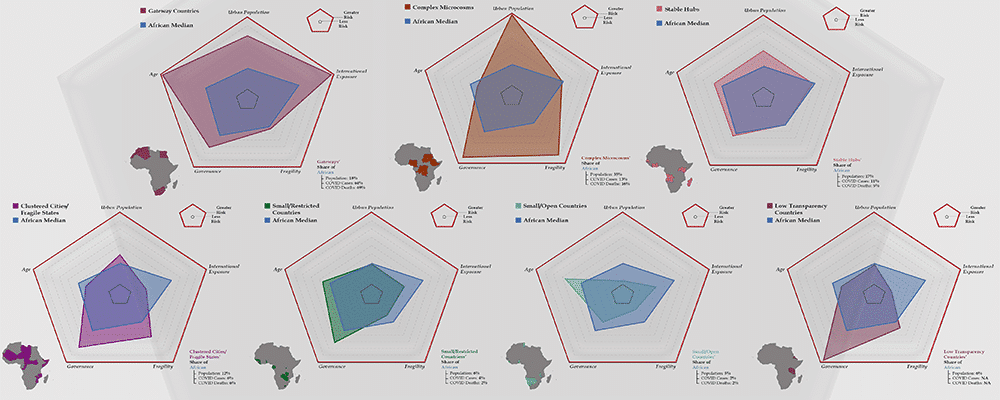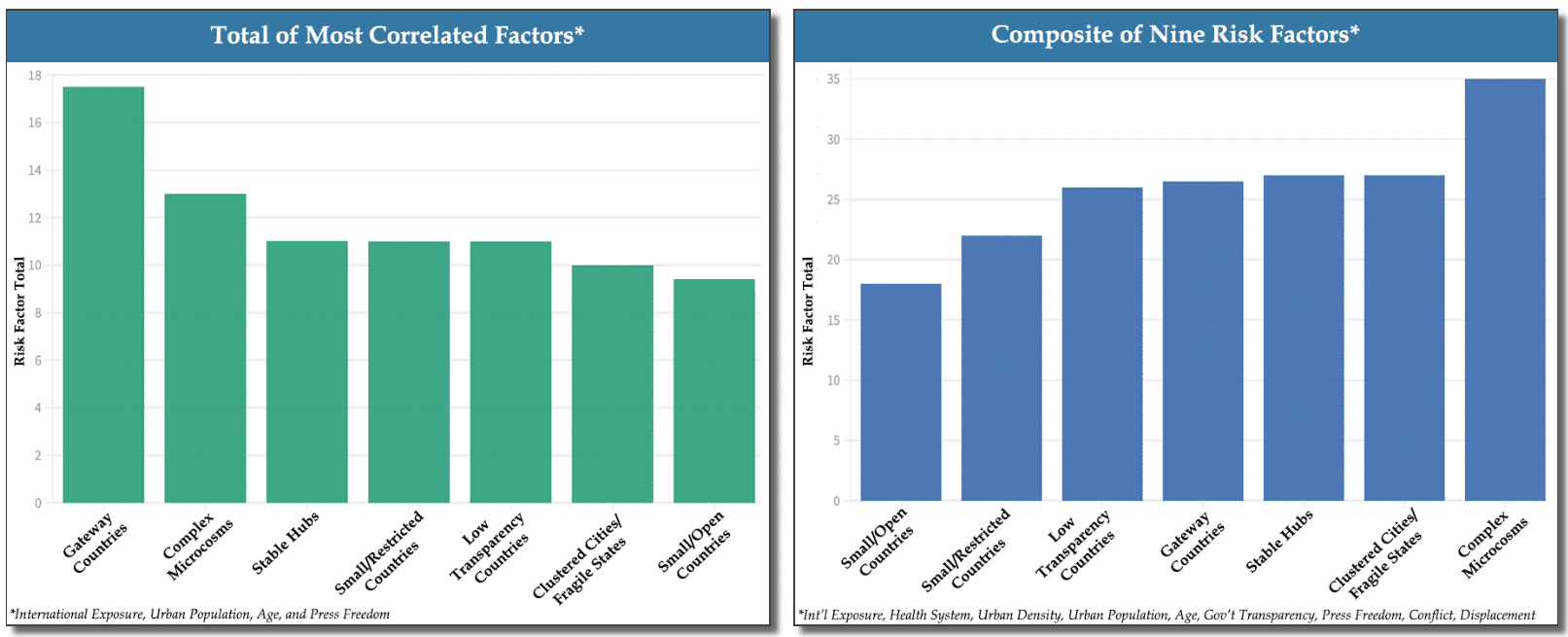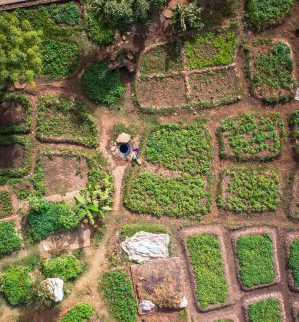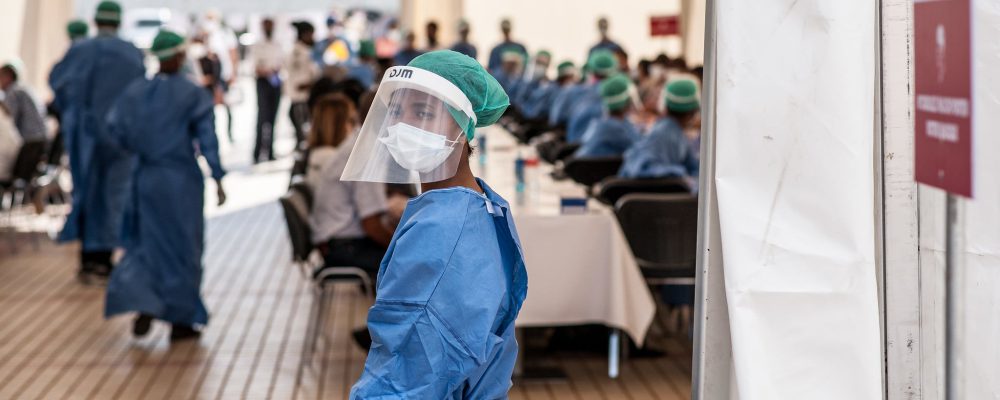There is not a single African COVID-19 trajectory, but rather multiple, distinct risk profiles. Recognizing this can facilitate a better understanding of and response to the pandemic threat in Africa.
The number of reported COVID-19 cases in Africa has been steadily increasing since the first confirmed episode in Egypt on February 15, 2020. Since May 1, the number of reported cases has been doubling every 3 weeks. Africa’s experience with past pandemics suggests the fight against the novel coronavirus is still in the early stages of what is likely to be a multiyear challenge.
Precise analysis of COVID-19 in Africa continues to be hindered by limited testing and reporting of cases. There is a wide variance in testing capacity, commitment to testing, and reporting of coronavirus cases and deaths. As a result, countries that are undertaking the most tests or reporting the highest number of cases may not necessarily match those countries most impacted or at risk from the pandemic.
Recognizing these data limitations, it is noteworthy that the pattern of reported transmissions of the coronavirus in Africa is shifting over time. At the outset of the pandemic, the Africa Center for Strategic Studies mapped out a series of nine risk factors reflecting levels of international exposure, urbanization, demography, fragility, and governance that collectively represent the varied vulnerabilities to the pandemic faced across the continent. In the earliest phase of the pandemic (through May 1), reported cases were most strongly correlated with three primary factors—international exposure, size of urban population, and strength of health sector—underscoring the influence of external contact and ability to test for the virus.
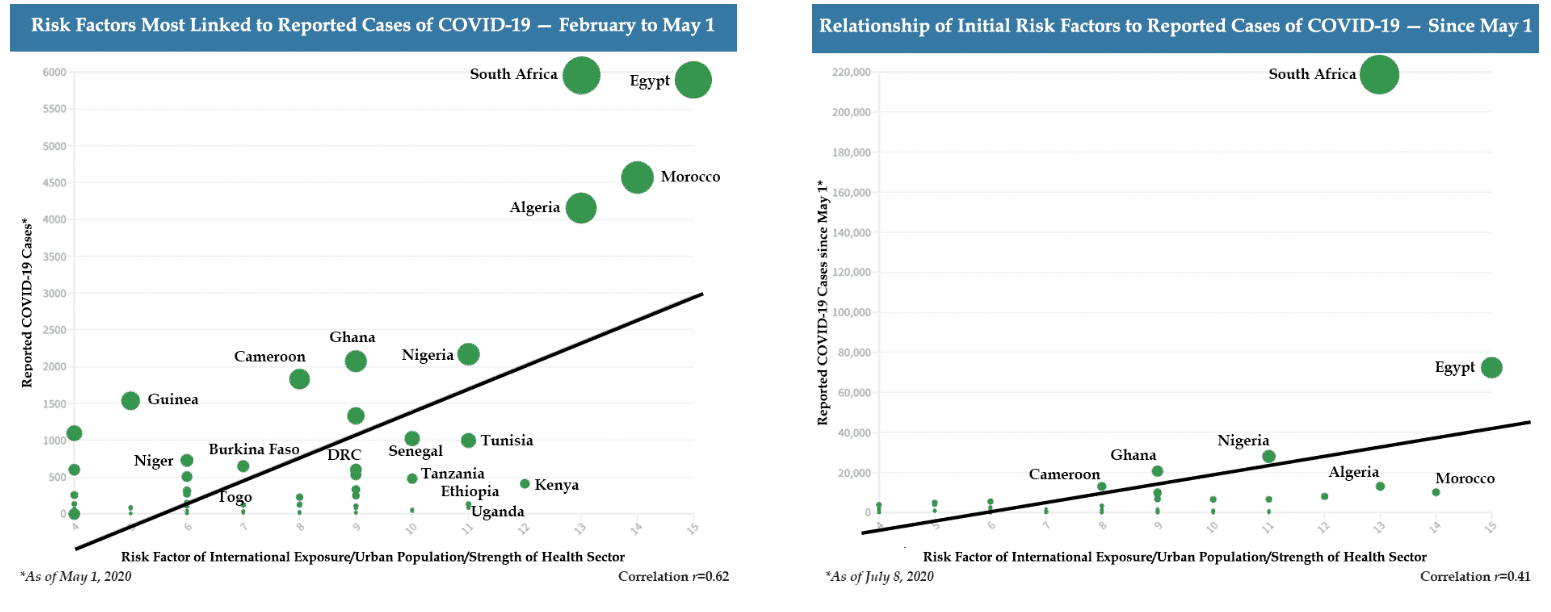
Since that time, and once COVID-19 had emerged in all 54 African countries, the influence of international exposure has slowly diminished, and transmissions have become more dependent on internal risk factors. Presently, the size of urban population, relative age of total population, and level of press freedom have emerged alongside international exposure as the risk factors most closely correlating with reported cases across the continent. As the scatterplots show, South Africa stands out in the number of reported cases with 43 percent of the continental total. Vitally, however, the Africa-wide correlations of key risk factors remain robust even when South Africa is excluded.
The takeaway is that as in-country transmissions grow, each country’s unique risk profile will become increasingly relevant in shaping the course of the pandemic. Recognizing the vulnerabilities—and strengths—that these different risk profiles represent, therefore, is central to mitigating the effects of COVID-19.
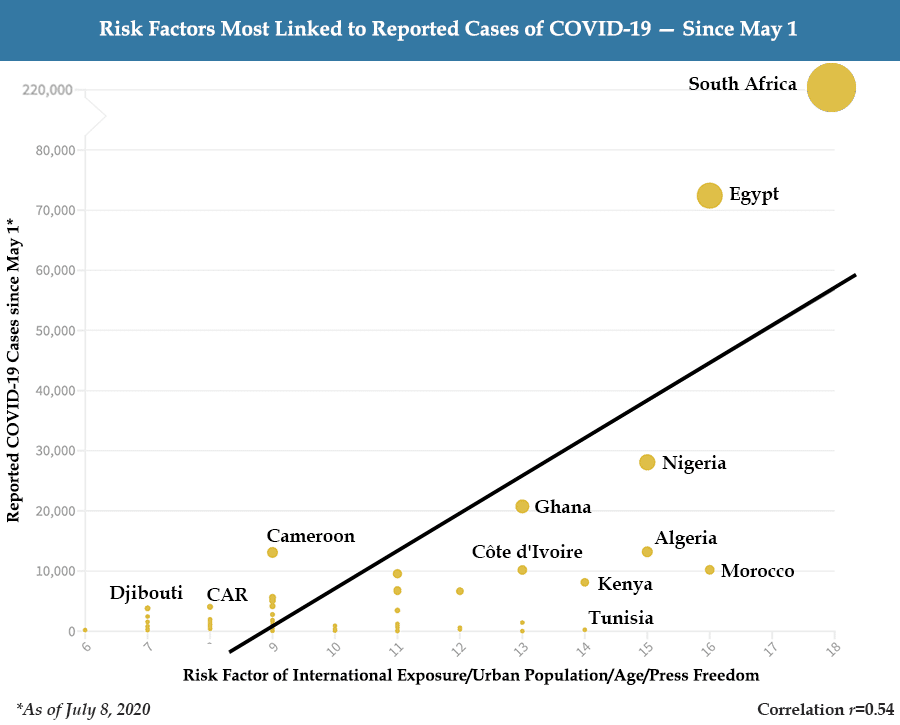
Africa’s Diverse Risk Profiles
Examining the spread of COVID-19 in Africa since its onset shows there is not a single African coronavirus trajectory. Rather, there are multiple, distinct patterns of experience in grappling with the pandemic, reflecting the continent’s great diversity. To better appreciate these varied COVID-19 experiences, the Africa Center has created a typology of seven COVID-19 profiles in Africa. These are based on a combination of factors: size of population, dimensions of urban landscapes, magnitude of conflict and displacement, demography, and governance. While certain countries could arguably fit more than one profile, by organizing countries into groups with similar features, the Africa Center aims to facilitate a more precise analysis of the COVID-19 threat on the continent—and ultimately deepen understanding of how best to mitigate its effects.

Gateway Countries

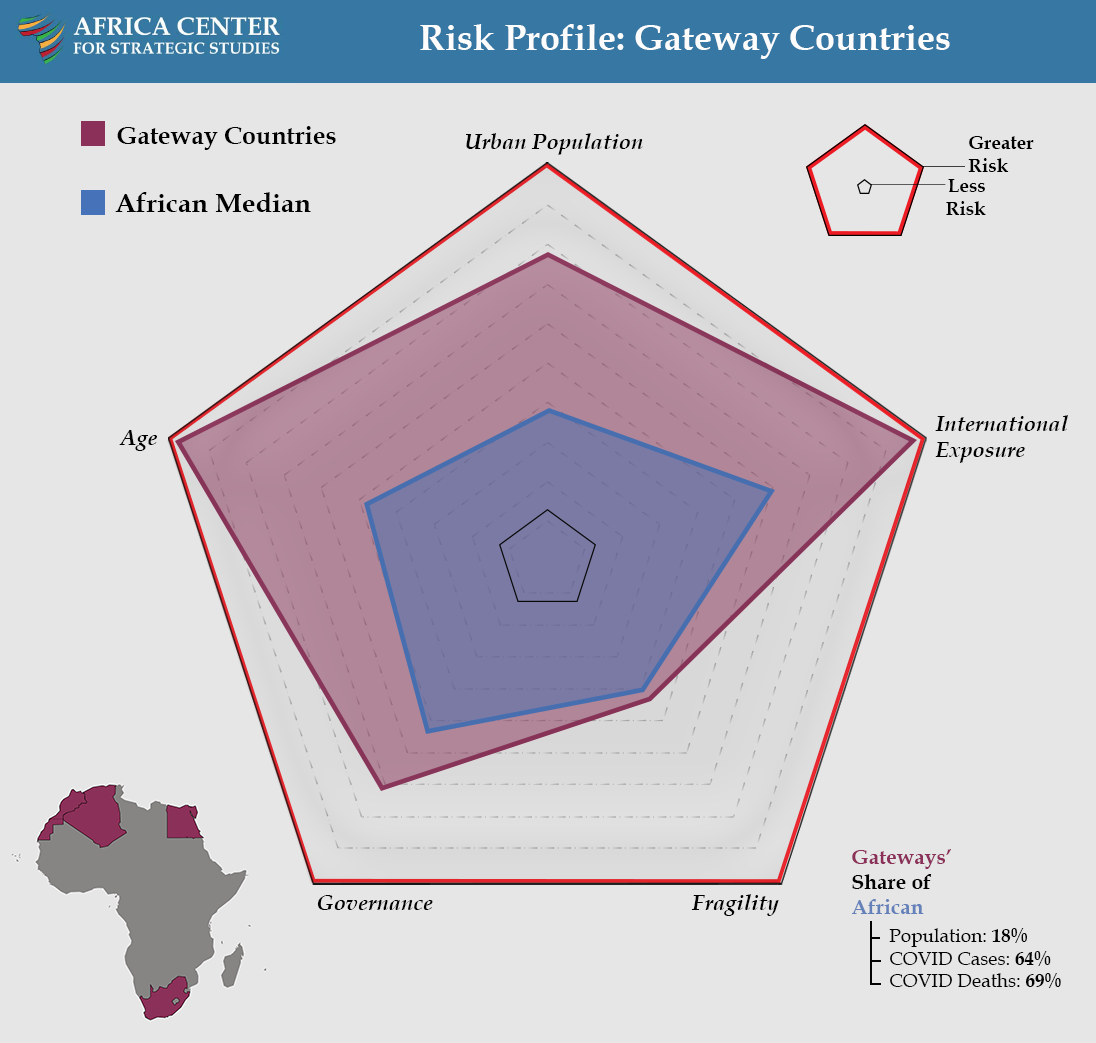
Gateway countries have among the highest levels of international trade, travel, tourism, and port traffic on the continent. Not coincidentally, this group is distinctive in that it accounts for 64 percent of all reported COVID-19 cases and 69 percent of reported deaths on the continent, even though it represents just 18 percent of the total population. This category includes some of Africa’s largest countries and economies. In other words, this group was exposed early and widely to the pandemic and has been fighting to bring the transmission under control from the outset. This group also has a relatively large segment of their populations in urban areas, including the megacities of Cairo and Johannesburg-Pretoria. The Gateway category is similarly typified by some of the strongest health systems on the continent. Therefore, these countries have, by and large, been proactive in conducting tests and reporting cases throughout the crisis. To this point, Gateway countries represent approximately 53 percent of all tests conducted on the continent.
Less well recognized, this group also has a median population age that is nearly a decade older than the African norm—28.5 vs. 20—contributing to the vulnerability of these populations once exposed to the virus. This category also has a relatively low level of press freedom, with some, notably Algeria and Egypt, having arrested journalists for reporting on COVID-19. These restrictions have likely reduced awareness of and trust in these governments’ communications, thereby hindering the effectiveness of a response to the pandemic. In fact, this group scores an average 17.5 out of a possible 20 in risk vulnerability along the 4 factors most strongly correlated to reported cases—international exposure, urban population, age, and press freedom. The African median for these 4 factors is 11.
Complex Microcosms


The Complex Microcosms category represents countries with large urban populations, widely varying social and geographic landscapes, and complex security challenges—reflections of the great diversity seen across Africa. The average population size in the Complex Microcosms category (87 million) is larger than any of the other categories, and these countries, on average, occupy territories of 1.1 million square kilometers. They also have urban populations that are in the top quintile across Africa. Many of their inhabitants live in densely populated informal settlements, making them particularly susceptible to the rapid transmission of the novel coronavirus. As many of these individuals work in service roles such as drivers and domestic staff, they are in daily contact with other social networks, highlighting their vulnerability for exposure and transmission. Yet, reported cases of COVID-19 for this profile represent only 13 percent of Africa’s total, even though the category comprises 35 percent of the total population.
Part of the seemingly more muted effect of the pandemic in this group is that it has relatively lower levels of international exposure than the Gateway countries, which resulted in a slower initial transmission of the virus. Moreover, the Complex Microcosms have younger populations than the African median, on average. This demographic feature is likely mitigating against the most devastating effects of the pandemic. The more moderate current vulnerability is reflected in the Complex Microcosms’ median risk factor of 13 out of 20 for the 4 most strongly correlated factors.
Still, this group has higher levels of risk on other important factors that are likely to make them vulnerable for the duration of the crisis. Namely, these countries have relatively weaker health systems, which limits the capacity for testing, reporting, and responding to transmissions. In other words, there is likely significant undercounting of COVID-19 cases among the Complex Microcosm countries. Moreover, four of the five countries in this category have active conflicts and all five have high levels of refugees and internally displaced persons. In addition to being a potential accelerant of transmission, conflict is a major distraction for governments attempting to mobilize resources to stem the flow of the virus. The large numbers of forcibly displaced populations, moreover, present a unique risk of rapid transmissions that could quickly devastate these already vulnerable groups while also advancing the spread of COVID-19 within these countries. The growing number of reported outbreaks within refugee and internally displaced persons communities in Africa underscore these risks. As a consequence of these and other vulnerabilities, the Complex Microcosms have the highest level of total risk factors (35 out of a possible 45) of any of the groups reviewed. Therefore, these countries could very well become concentrations for transmission as the pandemic unfolds.
Stable Hubs

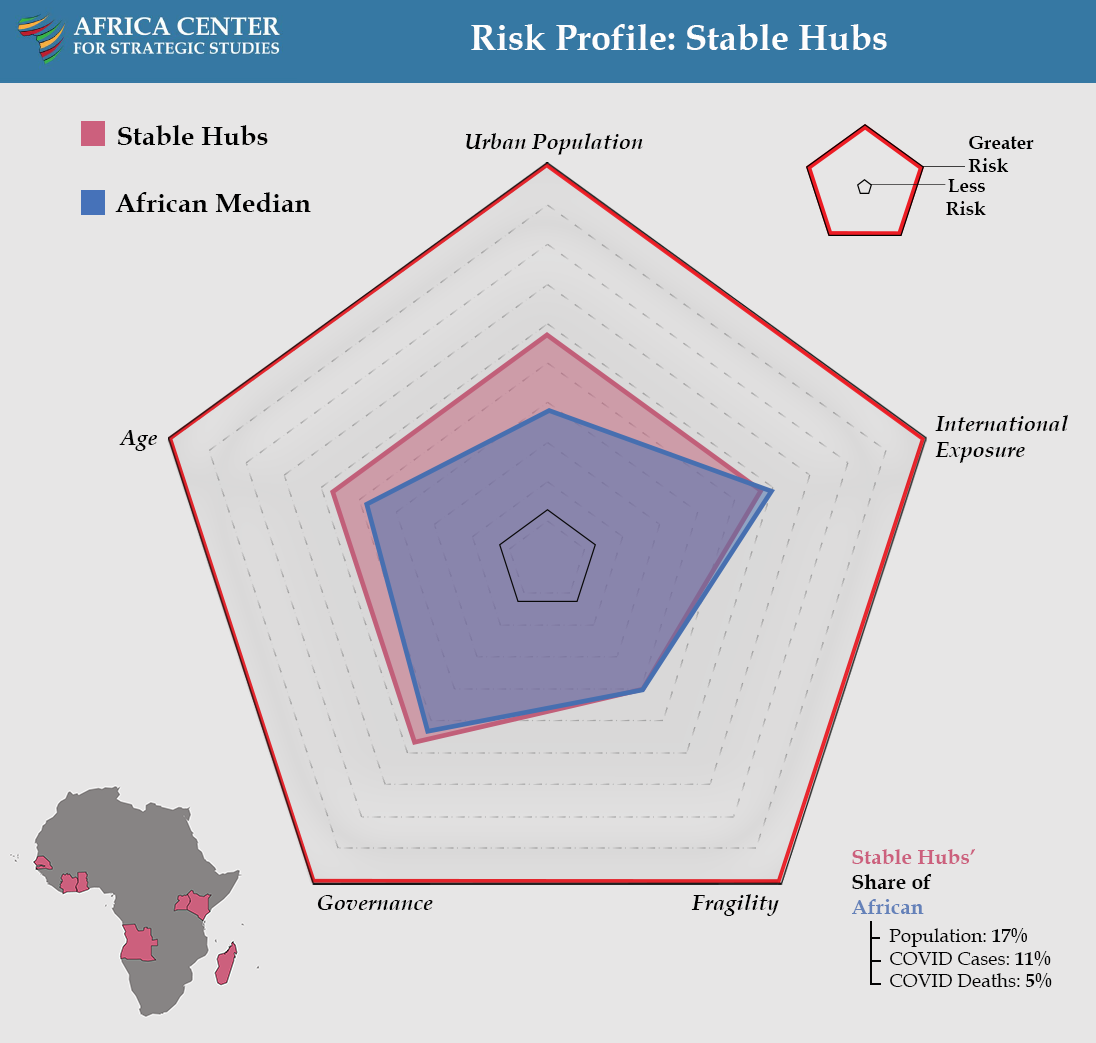
The Stable Hubs category represents countries with populations of between 20 and 50 million that serve as regional economic centers. A defining feature of the countries in this group is that they do not face active conflict. Reflective of the baseline nature of this group is that their risk factors closely mirror the African median. As such, the Stable Hubs face a lower COVID-19 vulnerability than the Gateway or Complex Microcosms groups given the former’s relatively smaller and less dense urban populations, as well as comparatively more robust independent media. This group is further distinct from the Gateway category in that it has a moderate level of international exposure, limiting the flow of transmissions from outside the continent.
The relative stability of this category enables these countries to dedicate more attention and resources on the COVID challenge. Some countries in this category, such as Uganda, face greater vulnerability as a result of the sizable forcibly displaced populations they are hosting. Overall, however, the Stable Hubs’ lower levels of international exposure, smaller urban populations, relative youth, and more open media environment represent a risk factor total of 11.5 out of 20 among the 4 most correlated variables.
While less vulnerable to COVID-19 risk factors than some of the other profiles, this group is noteworthy for its range of government transparency. In fact, there is an inverse relationship on these governance factors and reported cases of the coronavirus. In other words, relatively more transparent countries like Ghana, Côte d’Ivoire, and Senegal are reporting considerably higher numbers of cases than Angola, which has among the lowest levels of reported cases per million people on the continent. Accordingly, lack of transparency coupled with health systems too weak to conduct sufficient tests could enable a surge in transmissions in some of the Stable Hub countries without timely public awareness and responsiveness.
Clustered Cities / Fragile States
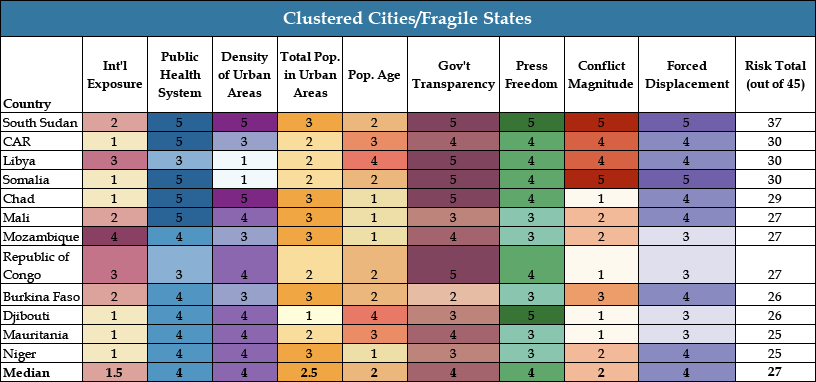
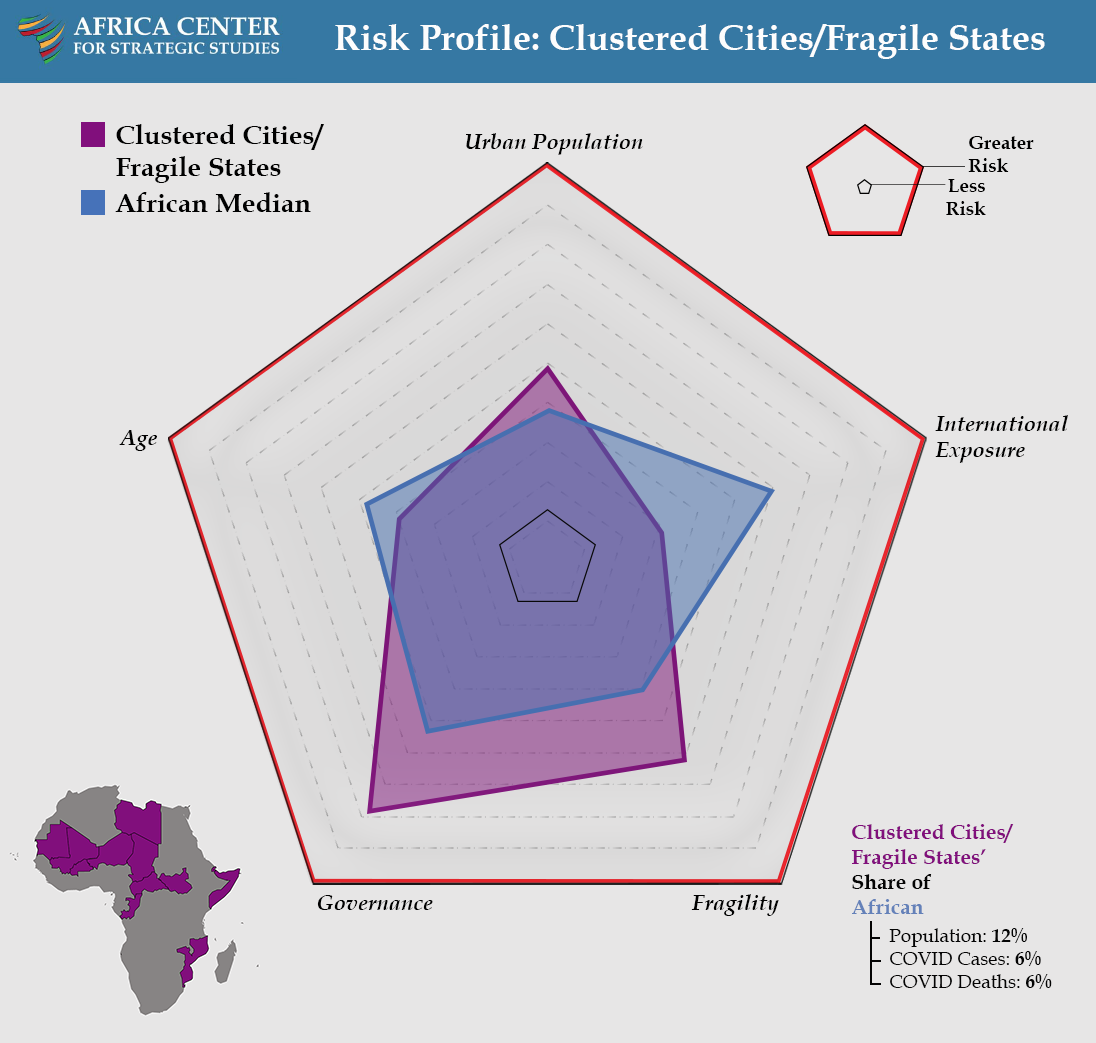
The Clustered Cities/Fragile States category of Africa’s COVID-19 exposure reflects the nearly dozen African countries, mostly in the Sahel and Greater Horn, characterized by having dense urban areas, while also facing an active conflict or large forcibly displaced population. This combination is not coincidental as instability tends to drive people into towns and cities. The end result is a compounding mixture of risk factors, including dense urban populations, weak public health systems, and a strain on resources to combat both the pandemic and security concerns.
Urban density may not immediately jump to mind when thinking of many countries in this category. Their median population is only 14 million, and many of these countries have wide expanses of sparsely inhabited territory. Yet, a disproportionately large share of the population in these countries lives in cities and towns. With an average of 4,200 persons per square kilometer living in urban areas, this group has the highest level of urban population density on the continent, comparable to cities like Bogota and Kabul. This level of population density creates a COVID-19 transmission risk similar to more urbanized countries, even though, at the national level, countries in the Clustered Cities/Fragile States category are among the least densely populated in the world.
The COVID-19 risk for this category is compounded by the fact that most countries in this group are facing some level of active conflict. Moreover, all are hosting significant numbers of displaced populations (averaging 6.5 percent of the total population). These factors make these countries more vulnerable to rapid—and potentially undetected—transmissions. Further exacerbating the pandemic challenge for this group is that most of these countries also have relatively weaker public health systems, contributing to the limited amount of testing and reported cases (and uncertainty over the seriousness of the threat). Relatively low levels of transparency and press freedom, furthermore, create an environment where an upswing in transmissions would go underreported, potentially facilitating a wider spread.
These potentially dangerous risks are mitigated by this group having among the lowest levels of international exposure and youngest age cohorts on the continent. These characteristics contribute to the Clustered Cities/Fragile States group’s risk factor total for the 4 most correlated variables of a relatively modest tally of 10 out of 20. This is mirrored by the 11 countries in this profile accounting for only 6 percent of reported COVID-19 cases in Africa, even though they comprise 12 percent of Africa’s total population. Nonetheless, the underlying risk factors for this group make it vulnerable to a sudden shift.
Small/Open and Small/Restricted
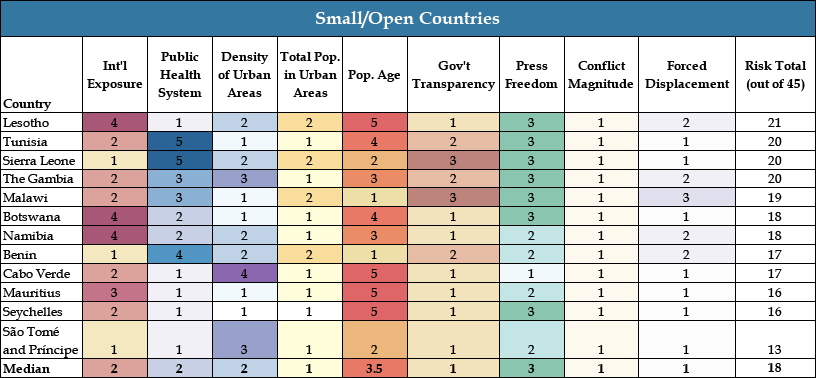


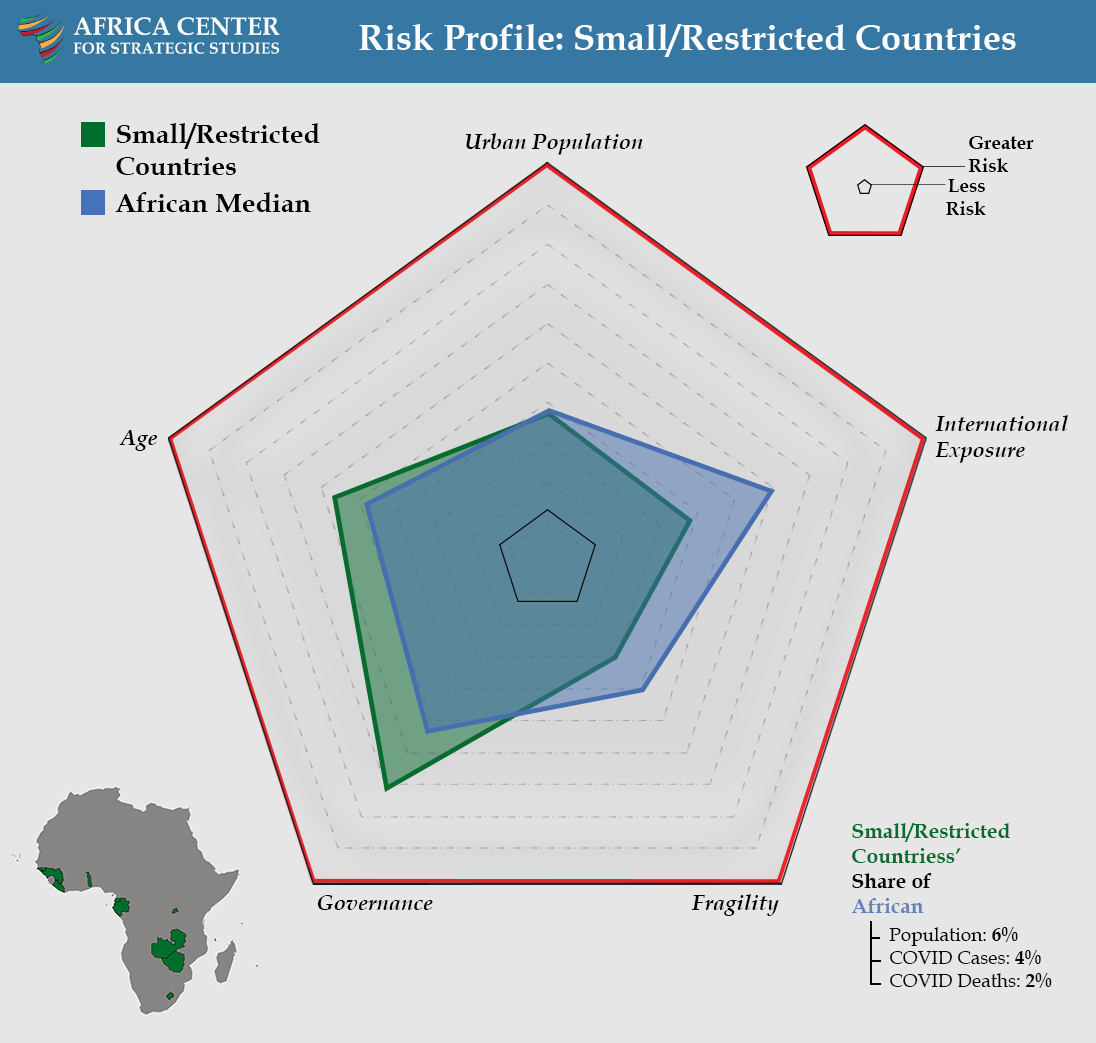
The Small/Open and Small/Restricted categories have very similar COVID-19 risk profiles with regard to their structural features. They comprise nearly two dozen African countries with a median total population of 5.5 million people, relatively small urban populations and urban density, similar median ages, and low levels of international exposure. Moreover, these two groups are relatively stable with low levels of conflict and forced displacement. In short, their collective COVID-19 vulnerability is relatively low, which is borne out by the relatively smaller number of reported cases compared to total population (6 vs. 11 percent of African totals).
The important difference between these two smaller population groups is in their governance. The Small/Open category reflects those countries within this typology that have stronger press freedom and transparency. The Small/Restricted category captures those that fall below the median on the combination of press freedom and transparency measures. Given the vital importance of information for educating the public, building trust, organizing collective action, identifying and responding to cases, and adapting to the shifting realities of the pandemic, this distinction is a defining feature of each group’s COVID-19 risk profile.
This difference in governance is mirrored by their divergent COVID-19 experiences. Countries in the Small/Open group have, on average, been conducting 30 percent more COVID-19 tests as the Small/Restricted group (43,673 vs. 33,593). Despite this, countries in the Small/Restricted group have reported 75 percent more cases and cases per million people (348 vs. 201).
In short, Small/Open countries appear to be testing more and flattening the curve of transmissions more rapidly than the Small/Restricted countries. A high level of transparency, for instance, is cited as a key factor in enabling Tunisia to dramatically reduce the number of cases it has faced.
Low Transparency

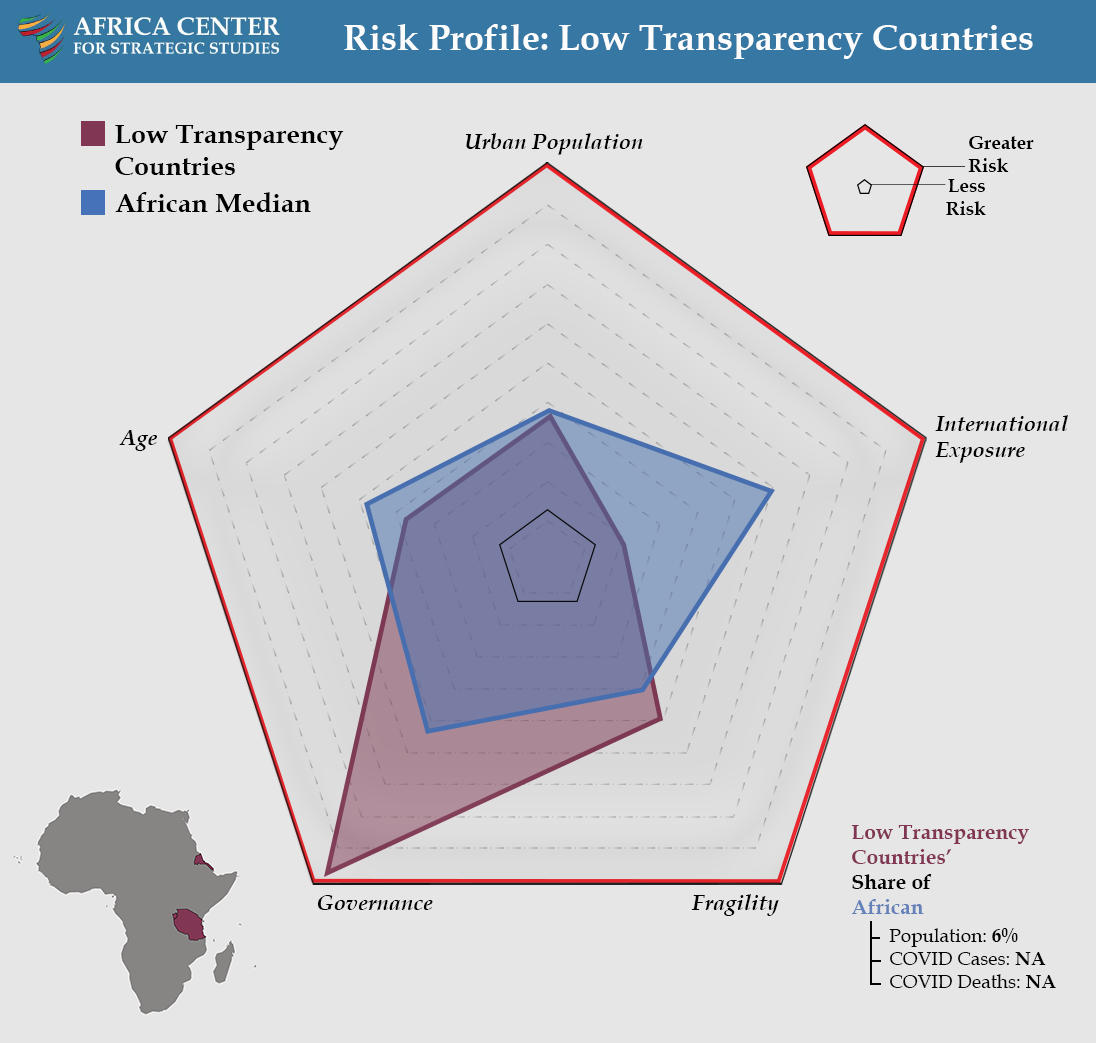
The final category of African COVID profiles are those countries—Tanzania, Burundi, and Eritrea—that are not actively testing or reporting on their coronavirus cases. As a result, it is very difficult to say with any confidence how seriously the pandemic is affecting these countries. To the extent that they are reporting, Tanzania, Burundi, and Eritrea indicate that their cases per million of population are 8, 16, and 41 respectively. The African median is 189 cases per million. Using this as a baseline suggests the actual caseload in these 3 countries could be anywhere from 5- to 24-fold higher than currently reported. While not included in this category given their more consistent reporting, other African countries with notably limited reported cases per million include Angola (12 cases per million), Uganda (21), Mozambique (34), and Zimbabwe (51).
As African economies gradually reopen, the risk of transboundary transmissions via travel and cargo means the lack of reporting by any given country has consequences for their entire region. National disparities in testing and reporting of cases, public education, and treatment of individuals who are exposed, in turn, inhibits regional coordination.
Ironically, with relatively low international exposure and youthful populations, the countries in the Low Transparency category are not necessarily at high risk. In fact, the median risk factor total for the 4 most correlated factors is only 11 out of a possible 20, placing it at the same level as the Small/Restricted profile. However, by not conveying the seriousness of the threat to their populations and taking precautions, these countries may be significantly amplifying the scale of the problem they face.
Implications
This analysis highlights the importance of avoiding a single African coronavirus narrative. While uneven testing and reporting limits deeper analysis, several distinct COVID-19 experiences are unfolding across the continent. Each of these profiles face different levels and types of COVID-19 risk. Certain profiles, notably the Gateway countries, have been most susceptible at the initial stages of the pandemic given their higher levels of international exposure. However, other categories, especially the Complex Microcosms and Clustered Cities/Fragile States groups, may have greater vulnerability over time due to their large urban populations, ongoing conflict or large refugee and internally displaced communities, and relatively low levels of transparency and press freedom.
Managing these vulnerabilities will vary by risk profile. While the levels of risk may differ across groups, continued vigilance will be needed across the continent as all categories continue to see rises in the number of reported cases. Moreover, given the risk of transboundary transmissions, vulnerability in one country creates a vulnerability for the entire region.
Countries with higher risks due to structural factors such as international exposure, large urban populations, and relatively older age cohorts will need to continue their efforts to contain transmissions among vulnerable populations. This will include continuing to limit large or high-density gatherings, especially indoors, and educate citizens on the value of mask wearing. Likewise, protections for Africa’s health professionals in what is a marathon rather than a sprint will be a vital force multiplier for keeping the wider population safe. The strength of Africa’s public health system is its community health extension networks, which emphasize prevention and behavior change. Prevention continues to be the priority response to the pandemic in Africa and, therefore, requires keeping health workers safe.
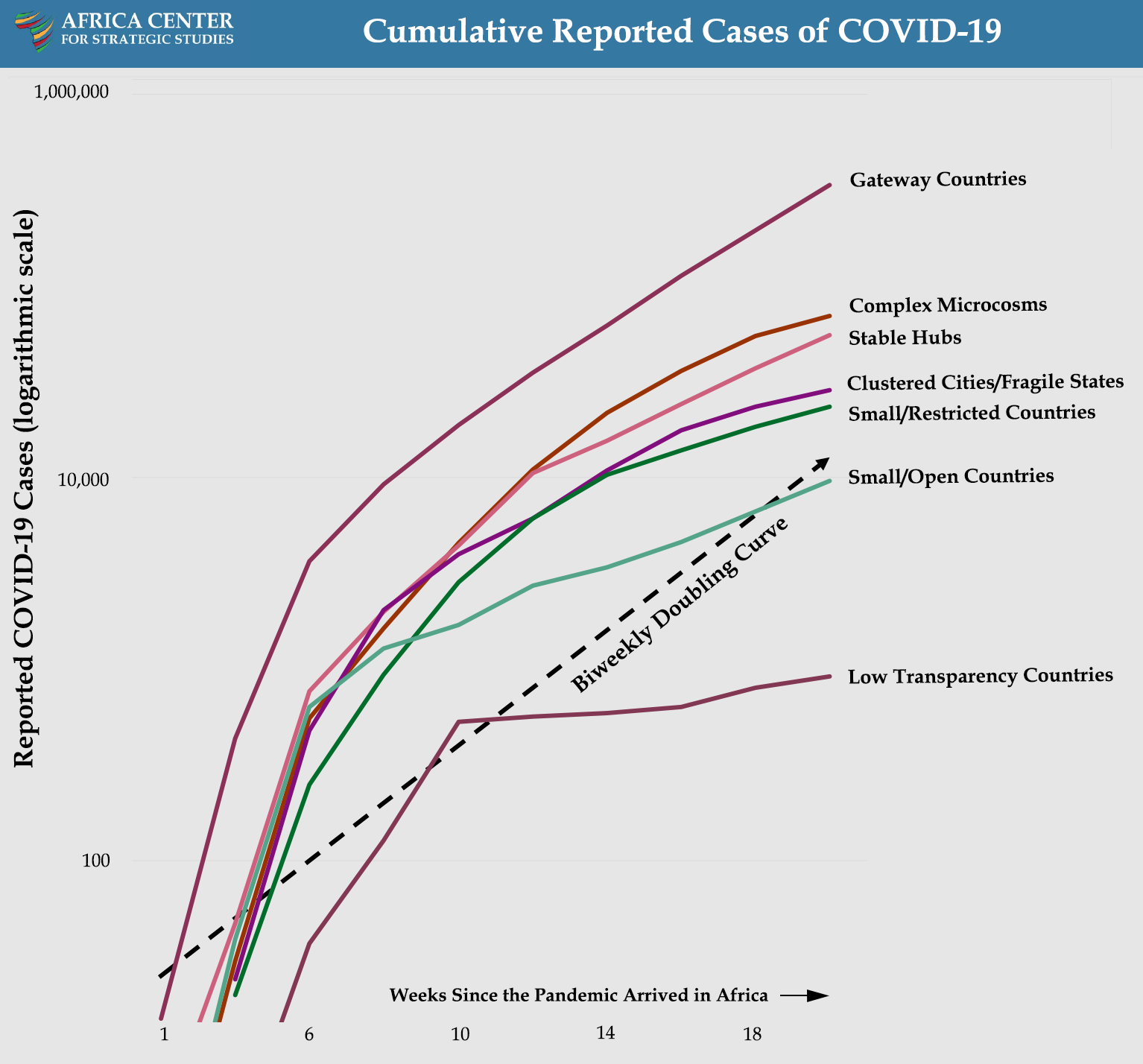
This analysis has also highlighted the compounded challenges that conflict-affected countries face in their COVID-19 responses. Political leaders and the public must navigate competing interests with limited resources to respond to both sets of threats. Large numbers of people living in informal settlements, as well as refugee or displaced persons communities, often in close quarters, represent potential hotspots for surges in transmissions for these countries. Best practice calls for proactive engagement with community leaders in these high-density settlements to apply practical steps to enhance social distancing, handwashing, alternative transportation options, isolation of individuals with symptoms, and contact tracing.
Competing pressures created by conflict can inhibit such initiatives—the rationale behind United Nations Secretary General António Guterres’ call, adopted by the United Nations Security Council, for a global ceasefire during the pandemic. The links between COVID-19 and conflict likewise should give further impetus to the African Union’s “Silence the Guns” initiative. Limits on testing in conflict-affected contexts may enable the spread of the coronavirus without it being immediately apparent. This ambiguity is further complicated by the fact that government transparency and press freedom tend to be more limited in conflict-affected countries.
Even outside of conflict zones, this review has underscored the importance of governance, transparency, and a free press for combating the pandemic. Reported COVID-19 cases tend to be correlated with more open governance. As the pandemic expands across Africa, a free press will continue to be an integral component for mitigating the outbreak by serving as an early warning system and helping to target public health responses. Likewise, government transparency will be critical for engendering trust and compliance with the public health measures needed to slow the virus. A free press, therefore, is a crucial tool to Africa’s pandemic response and the continent’s resiliency strategy more generally.
Additional Resources
- Africa Centres for Disease Control and Prevention, “Hand Washing Facility Options for Resource Limited Settings,” June 24, 2020.
- Interagency Risk Communication and Community Engagement Technical Working Groups in East and Southern and West and Central Africa, “Finding Community-Led Solutions to COVID-19: An Interagency Guidance Note on Working with Communities in High Density Settings to Plan Local Approaches to Preventing and Managing COVID-19,” May 21, 2020.
- Africa Center for Strategic Studies, “Lessons from the 1918-1919 Spanish Flu Pandemic in Africa,” Spotlight, May 15, 2020.
- Africa Centres for Disease Control and Prevention, Vital Strategies, et. al., “Revealing the Toll of COVID-19: A Technical Package for Rapid Mortality Surveillance and Epidemic Response,” May 2020.
- Africa Center for Strategic Studies, “African Adaptations to the COVID-19 Response,” Spotlight, April 15, 2020.
- Mark Duerksen, “Innovations Needed to Prevent COVID-19 from Catching Fire in Africa’s Cities,” Spotlight, Africa Center for Strategic Studies, April 9, 2020.
- Africa Center for Strategic Studies, “Mapping Risk Factors for the Spread of COVID-19 in Africa,” Infographic, April 3, 2020.
- Shannon Smith, “Managing Health and Economic Priorities as the COVID-19 Pandemic Spreads through Africa,” Spotlight, Africa Center for Strategic Studies, March 30, 2020.
- Wendy Williams, “COVID-19 and Africa’s Displacement Crisis,” Spotlight, Africa Center for Strategic Studies, March 25, 2020.
- Africa Center for Strategic Studies, “Coronavirus Spreads through Africa,” Infographic, March 19, 2020 (updated weekly).

